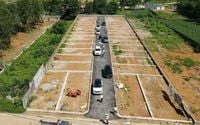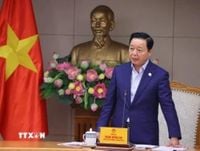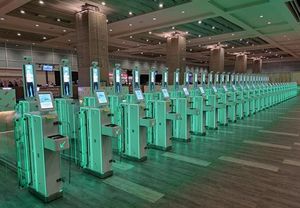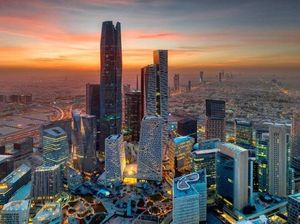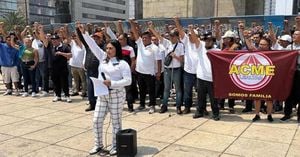Hà Nội has set an ambitious goal to fully disburse its public investment capital plan for 2025, as outlined in a recent statement from the Văn phòng Chính phủ on April 1, 2025. This announcement follows a meeting led by Phó Thủ tướng Trần Hồng Hà, who emphasized the importance of effective capital disbursement, traffic safety, and air pollution management in the capital.
According to the announcement, the Hanoi People's Committee has proactively developed a detailed disbursement plan, assigning specific responsibilities to various departments and project owners. The total investment capital plan for this year stands at 87.13 trillion đồng, which is approximately 1.13 times higher than the 2024 plan and represents 10.5% of the national total. However, by March 24, 2025, only 5.05 trillion đồng had been disbursed, accounting for just 5.8% of the total plan and falling below the national average.
The slow pace of disbursement has been attributed to several factors, primarily difficulties in site clearance, such as determining land origins and prices, as well as residents' disagreements with compensation plans. Additionally, some ODA projects have not completed necessary investment procedures, leading to delays.
To address these challenges, Phó Thủ tướng Trần Hồng Hà has urged the city to focus on key tasks, including expediting site clearance and construction progress for essential projects. The city is also expected to develop a disbursement plan for each project, requiring project owners to report on their progress monthly and quarterly.
In terms of traffic safety, city leaders have implemented urgent measures to address the heavy traffic flow that has led to infrastructure overload. In the first quarter of 2025, there were 306 traffic accidents in the city, resulting in 177 fatalities and 199 injuries. Although this marks a decrease in the number of accidents compared to the same period last year, traffic congestion remains a significant issue, particularly during holidays and peak hours.
To combat these challenges, the Vice Prime Minister has tasked the Hanoi People's Committee with coordinating efforts with various ministries to deploy comprehensive solutions. This includes developing a "Safe Traffic City" model, rationally planning parking lots, and gradually reducing the number of motorcycles allowed in the inner city. The city is also encouraged to enhance public transportation systems and improve service quality to attract more users.
Moreover, the government is taking steps to tackle air pollution in the capital. Phó Thủ tướng has requested a thorough assessment of air pollution sources in Hanoi to devise effective control measures. If road transport vehicles are identified as significant pollution sources, economic regulation tools will be employed to address the issue rather than administrative bans.
The Ministry of Construction and the Ministry of Agriculture and Rural Development have been tasked with supporting Hanoi in establishing emission standards for vehicles and implementing regular emission inspections. Furthermore, efforts will be made to control pollution from construction sites and agricultural practices.
In light of the recent land fever surrounding Hanoi, experts have also weighed in on the implications of rising land prices. According to real estate analysts, three primary factors contribute to this phenomenon: the continuous increase in land prices in Hanoi's suburbs, the potential merger of provinces leading speculative capital to seek new opportunities, and the emergence of speculators manipulating market psychology to artificially inflate prices.
Following the news of the provincial merger, interest in real estate in related areas surged, with searches for properties in Nhơn Trạch district (Đồng Nai) increasing by 41%, and cities like Thuận An and Dĩ An (Bình Dương) seeing rises of 26% and 23%, respectively. Not only did search volumes spike, but property prices in these regions also escalated significantly.
However, experts caution that this surge in interest and prices may pose risks, particularly for inexperienced investors. They emphasize that real estate values are influenced not only by merger news but also by infrastructure development, location, and local economic conditions. Investors are advised to remain vigilant and avoid making hasty decisions based on herd mentality, as market conditions can shift rapidly.
Mr. Nguyễn Văn Đính, Chairman of the Vietnam Association of Real Estate Brokers (VARS), has urged investors to conduct thorough research on price trends and planning progress before committing funds. He warns that only areas with established infrastructure and genuine residential appeal will ensure long-term growth potential, while speculative-driven areas may lead to financial losses.
To foster a sustainable real estate market and prevent speculative bubbles, local authorities are encouraged to monitor market activities closely, ensure transparency in planning information, and regulate prices effectively.
In conclusion, as Hà Nội strives to achieve its ambitious public investment goals and address pressing issues such as traffic safety and air pollution, the real estate market continues to experience fluctuations driven by speculation and economic factors. Stakeholders, including government officials and investors, must navigate these challenges carefully to foster a stable and sustainable environment for growth.
